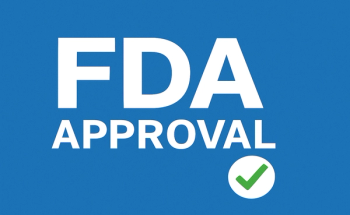
Roux-en-Y Gastric Bypass Surgery is Associated With an Increased Risk of Fracture Compared With Adjustable Gastric Banding
Background
Over the past 20 years, obesity rates have increased sharply, with an age-adjusted prevalence of 35% among US adults in 2014. Among patients with severe obesity, bariatric surgery is effective at reducing body weight; however, there are potential clinical risks associated with these procedures, such as metabolic bone disease. Globally, Roux-en-Y gastric bypass (RYGB) and adjustable gastric banding (AGB) are among the most commonly performed bariatric surgery procedures. In recent years, the popularity of RYGB has risen while the utilization of AGB has declined. RYGB is a true metabolic surgery that is composed of both gastric reduction and intestinal reconstruction, resulting in greater metabolic improvements compared with surgeries that involve restriction, such as AGB.1
Although there is consensus that metabolic bone disease is a negative effect of bariatric surgery, the clinical impact of fractures among patients who have undergone bariatric surgery remains controversial. The results of previous studies have demonstrated mixed results: that bariatric surgery greatly increases, mildly increases, or has no effect upon future fracture risk. These studies utilized nonsurgical control groups, which may have confounded the results, as obesity itself has a complex association with fractures.1
Data on procedure-specific risks are limited; however, the results of multiple studies have shown that RYGB leads to significant and large declines in bone mineral density (BMD) while AGB is associated with minimal changes in BMD and has a reduced or neutral effect on markers of bone metabolism. At the time of this study, it was unknown whether RYGB was associated with an increased fracture risk compared with AGB. Therefore, Yu et al investigated the rate of incident fracture in patients who were obese and underwent RYGB compared with those who underwent AGB by examining longitudinal cohort data from a US commercial insurance claim database.1
Study Design
This population-based propensity score-matched cohort study used claims data from 2005 to 2013 from a large US commercial health plan (United HealthCare). The claims data provided patient demographic information and longitudinal data on inpatient and outpatient medical claims, procedure claims, and pharmacy claims.1
Patients with morbid obesity who were at least 21 years of age and had undergone RYGB or AGB were identified for potential inclusion in the study cohort. Patients with at least 1 year of continuous enrollment in the health plan immediately following the first claim for RYGB or AGB (ie, index date) were included in the study population. Patients were excluded if they had undergone sleeve gastrectomy or other gastric surgeries including revision, had cancer, received chemotherapy, had end-stage renal disease or received a renal transplant, or were admitted to a nursing home during the baseline period of 365 days before the index date.1
The incidence of any nonvertebral osteoporotic fractures was the primary outcome of interest. Secondary analyses assessed the risk of fracture at these individual sites: humerus, wrist, hip, and pelvis. Vertebral fracture was not included as an outcome due to the difficulty in capturing incident vertebral fracture using claims data.1
Potential confounders (including age, year of surgery, geographical region, osteoporosis diagnosis, receipt of osteoporosis medications, history of fall, BMD testing, and markers of healthcare use intensity) were assessed with type of bariatric surgery during the baseline period of 365 days and on the index date.1
Baseline patient characteristics of the study groups were compared before propensity score matching, which was used to control for potential confounders at baseline.1
Results
Initially, investigators identified 23,263 patients at least 21 years of age with at least 1 RYGB or AGB procedure code on a date after 1 year of continuous enrollment in the health plan. After applying the eligibility criteria, investigators identified 12,482 patients who had undergone an RYGB procedure and 8922 patients who had undergone an AGB procedure. Following 1:1 propensity score matching, the final cohort consisted of 7516 pairs of RYGB and AGB patients. Baseline demographics, comorbidities, and healthcare utilization were well balanced within the propensity score-matched cohort; the mean age was 44 years and the majority of patients were female (79%).1
A total of 281 nonvertebral fractures occurred in the 2 surgical groups during the follow-up period. As demonstrated in the
Conclusions
In this population-based propensity score-matched cohort study, RYGB was associated with a 43% increase in the risk of clinically relevant fractures compared with AGB, especially those of the hip and wrist. The greater risk of fracture following RYGB procedures versus AGB became evident more than 2 years after surgery and increased in subsequent years.1
Reference
1. Yu EW, Lee MP, Landon JE, Lindeman KG, Kim SC. Fracture risk after bariatric surgery: Roux-en-Y gastric bypass versus adjustable gastric banding. J Bone Miner Res. 2017;32(6):1229-1236. doi: 10.1002/jbmr.3101.
Newsletter
Stay ahead of policy, cost, and value—subscribe to AJMC for expert insights at the intersection of clinical care and health economics.




























































